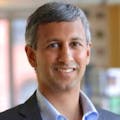The question of how the world can end extreme poverty and improve human wellbeing will take on new urgency in 2015, as the Millennium Development Goals (MDGs) expire and a new set of goals – the proposed Sustainable Development Goals (SDGs) – are finalized.
To continue reading, subscribe to Eco‑Business.
There's something for everyone. We offer a range of subscription plans.
- Access our stories and receive our Insights Weekly newsletter with the free EB Member plan.
- Unlock unlimited access to our content and archive with EB Circle.
- Publish your content with EB Premium.
United Nations Secretary General Ban Ki-moon’s “Synthesis Report,” outlining the main elements of the post-2015 agenda, provides strong guidance regarding what sustainable development should look like and what world leaders must do over the next 15 years to achieve it. After two years of crafting the “what” of sustainable development, the year ahead must focus on how to get it done.
The central ambition is bold: the eradication of extreme poverty by 2030. To make that happen, the SDGs will need to shift away from the twentieth-century model of development, in which rich countries gave money to poor countries, mostly to feed the hungry and improve health and education. The MDGs were remarkably successful in several of these areas. But the picture has changed significantly since then. A new set of emerging economies – including China, India, Brazil, and South Africa – is racing to modernize. The private sector is assuming a greater role in economic development. And environmental degradation is threatening the gains of recent decades.
The SDGs will have to transcend the idea of a planet divided starkly between those who give aid and those who receive it. The new goals must account for a world undergoing rapid globalization, in which all countries have assets as well as needs. Today’s challenges go beyond health, food, and education. The SDGs will have to integrate these concerns with the demands of the growing global middle class, the effects of shifting political and economic power, and the challenges of environmental sustainability, including climate change.
Three ingredients will be essential to achieving the goals: financing mechanisms, trade, and partnerships. Forty years after rich countries promised to dedicate 0.7% of GDP to aid, their commitments remain at less than half that level. Though most emerging economies no longer rely on aid, it remains crucially important for low-income countries. That said, even if aid targets were met, the shift to sustainable development will cost much more than what aid alone can cover. We need to look for new sources of funds, ensure that government spending is aligned with the sustainable-development agenda, and target those areas where the money can do the most good.
In much of the developing world, investing in sustainable development is complicated by the fact that tax revenues are too low to pay for what is needed. This is not always a matter of raising tax rates; it is also often a matter of collecting what people and companies owe. Closing loopholes and cracking down on evasion are two ways to ensure that taxes are collected. The OECD estimates that a dollar of aid spent on improving tax collection yields an average of $350 in revenue. A shared commitment that builds on initiatives by the G-8 would make tax evasion that relies on tax havens or money laundering harder to hide.
Governments cannot deliver a sustainable future alone. The private sector also has an important role to play in energy, agriculture, and urban development, including transport and water systems that can drive innovation and economic opportunity. While levels of private finance dwarf international public finance, directing these private funds to programs that reach the poorest and protect the environment requires the right policy incentives, such as a price on carbon, regulatory certainty, and the wise use of public money.
“
Governments cannot deliver a sustainable future alone. The private sector also has an important role to play in energy, agriculture, and urban development, including transport and water systems that can drive innovation and economic opportunity.
Trade boosts domestic production and generates revenue that can help pay for development. There have been important gains in market access in the past 15 years: 80% of developing countries’ exports to developed countries are now tariff-free, while average tariffs are down overall.
But non-tariff barriers can cost exporting countries more than tariffs do. What is needed is an international partnership that helps low-income countries integrate into the globalized marketplace while improving environmental and labor standards. The SDGs can create political momentum for these efforts, which could then be framed by the World Trade Organization in December 2015.
Making development sustainable will also require accelerated innovation and diffusion of technology between now and 2030. A global partnership could spur investment in research and development and ease the flow of information among scientists, business people, and policymakers.
Such new and creative partnerships can make progress on complex problems that governments, civil society, or the private sector cannot or will not solve alone. For example, the GAVI Alliance (formerly the Global Alliance on Vaccines and Immunization), a partnership comprising international organizations, philanthropies, governments, companies, and research organizations, has immunized 440 million children since 2000 and helped avert more than six million deaths. We must improve and expand these types of partnerships to other challenges, such as infrastructure, agriculture, and energy.
Between now and September 2015, when heads of state will gather for the UN General Assembly, we have a historic chance to set the world on a more sustainable path that will eradicate poverty and enhance prosperity for all. Ambitious goals provide a firm foundation for a brighter future. Over the coming months, however, leaders must work together to set the world on the right course to realize this vision.
Manish Bapna is Managing Director of the World Resources Institute. Kitty van der Heijden is European Director of the World Resources Institute.
Copyright: Project Syndicate, 2015.
www.project-syndicate.org









